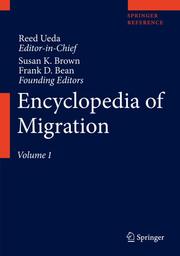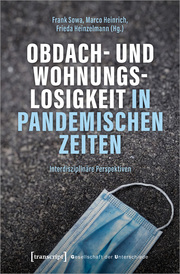The Palgrave Handbook of Youth Mobility and Educational Migration
eBook
Bibliographische Informationen
Format: PDF
Digitale Rechteverwaltung: Digitales Wasserzeichen
Beschreibung
This handbook provides an overview of developments in the youth mobility and migration research field, with specific emphasis on movement for education, work and training purposes, encompassing exchanges sponsored by institutions, governments and international agencies, and free movement.
The collection features over 30 theoretically and empirically-based discussions of the meaning and key aspects of various forms of mobility as practiced in contemporary societies, and concludes with an exploration of the costs and benefits of moving abroad to individuals and societies at a time when the viability of free circulation is being called into question.
The geographical scope of the book covers Europe, Asia, Australia and the Americas, and takes into account socio-economic and regional inequalities, as well as recent developments such as the refugee crisis, Brexit and the Covid-19 pandemic. The book integrates the fields of youth mobility and migration studies, creating opportunities for the establishment of a new paradigm for understanding the spatial circulation of youth and young adults in the twenty-first century.Autorenportrait
Inhalt
E-Book Informationen
Alle hier erworbenen E-Books können Sie in Ihrem Kundenkonto in die kostenlose PocketBook Cloud laden. Dadurch haben Sie den Vorteil, dass Sie von Ihrem PocketBook E-Reader, Ihrem Smartphone, Tablet und PC jederzeit auf Ihre gekauften und bereits vorhandenen E-Books Zugriff haben.
Um die PocketBook Cloud zu aktivieren, loggen Sie sich bitte in Ihrem Kundenkonto ein und gehen dort in den Bereich „E-Books“. Setzen Sie hier einen Haken bei „Neue E-Book-Käufe automatisch zu meiner Cloud hinzufügen.“. Dadurch wird ein PocketBook Cloud Konto für Sie angelegt. Die Zugangsdaten sind dabei dieselben wie in diesem Webshop.
Weitere Informationen zur PocketBook Cloud finden Sie unter www.meinpocketbook.de.
Allgemeine E-Book-Informationen
E-Books in diesem Webshop können in den Dateiformaten EPUB und PDF vorliegen und können ggf. mit einem Kopierschutz versehen sein. Sie finden die entsprechenden Informationen in der Detailansicht des jeweiligen Titels.
E-Books ohne Kopierschutz oder mit einem digitalen Wasserzeichen können Sie problemlos auf Ihr Gerät übertragen. Sie müssen lediglich die Kompatibilität mit Ihrem Gerät prüfen.
Um E-Books, die mit Adobe DRM geschützt sind, auf Ihr Lesegerät zu übertragen, benötigen Sie zusätzlich eine Adobe ID und die kostenlose Software Adobe® Digital Editions, wo Sie Ihre Adobe ID hinterlegen müssen. Beim Herunterladen eines mit Adobe DRM geschützten E-Books erhalten Sie zunächst eine .acsm-Datei, die Sie in Adobe® Digital Editions öffnen müssen. Durch diesen Prozess wird das E-Book mit Ihrer Adobe-ID verknüpft und in Adobe® Digital Editions geöffnet.
Weitere Artikel aus der Kategorie "Soziologie/Sozialstrukturforschung"
Noch nicht lieferbar

Lieferbar innerhalb 1 - 2 Wochen

Lieferbar innerhalb 1 - 2 Wochen

Noch nicht lieferbar

Lieferbar innerhalb 24 Stunden









